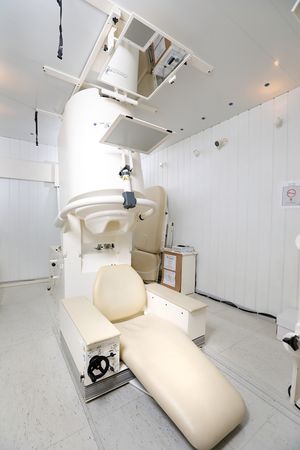Facility Description

The laboratory's main instrument is a CTF MEG system, a whole-head SQUID magnetometer with 275 channels, capable of recording the magnetic field of the brain at very high spatial and temporal resolution. At the time it was installed, in mid-2002, it was the largest system of its kind in the world, and still ranks as a world-class device.
The system is housed in a magnetically shielded room, for enhanced passive noise reduction. In addition, the CTF MEG system is equipped with synthetic 3rd gradient balancing, an active noise cancellation technique that uses a set of reference channels to subtract background interference. The resulting noise floor is on the order of 5–7 fT above 1 Hz.
The lab also contains an array of stimulus and response devices which are available to our users for use in experiments.
To date the lab has been used to conduct research in areas of basic cognition such as working memory, auditory and visual perception, emotion processing, and sensorimotor coordination, as well as the study of various disease states such as Alzheimer's, schizophrenia, and epilepsy.
When writing manuscripts including data collected on the NIMH MEG Core Facility, you can use the following text as a template, replacing bracketed text as appropriate:
Magnetoencephalography data were recorded [at 600 Hz with a bandwidth of 0—150 Hz] using a CTF 275 MEG system (CTF Systems, Inc., Canada) composed of a whole-head array of 275 radial 1st order gradiometer/SQUID channels housed in a magnetically shielded room (Vacuumschmelze, Germany). Synthetic 3rd gradient balancing was used to remove background noise on-line.